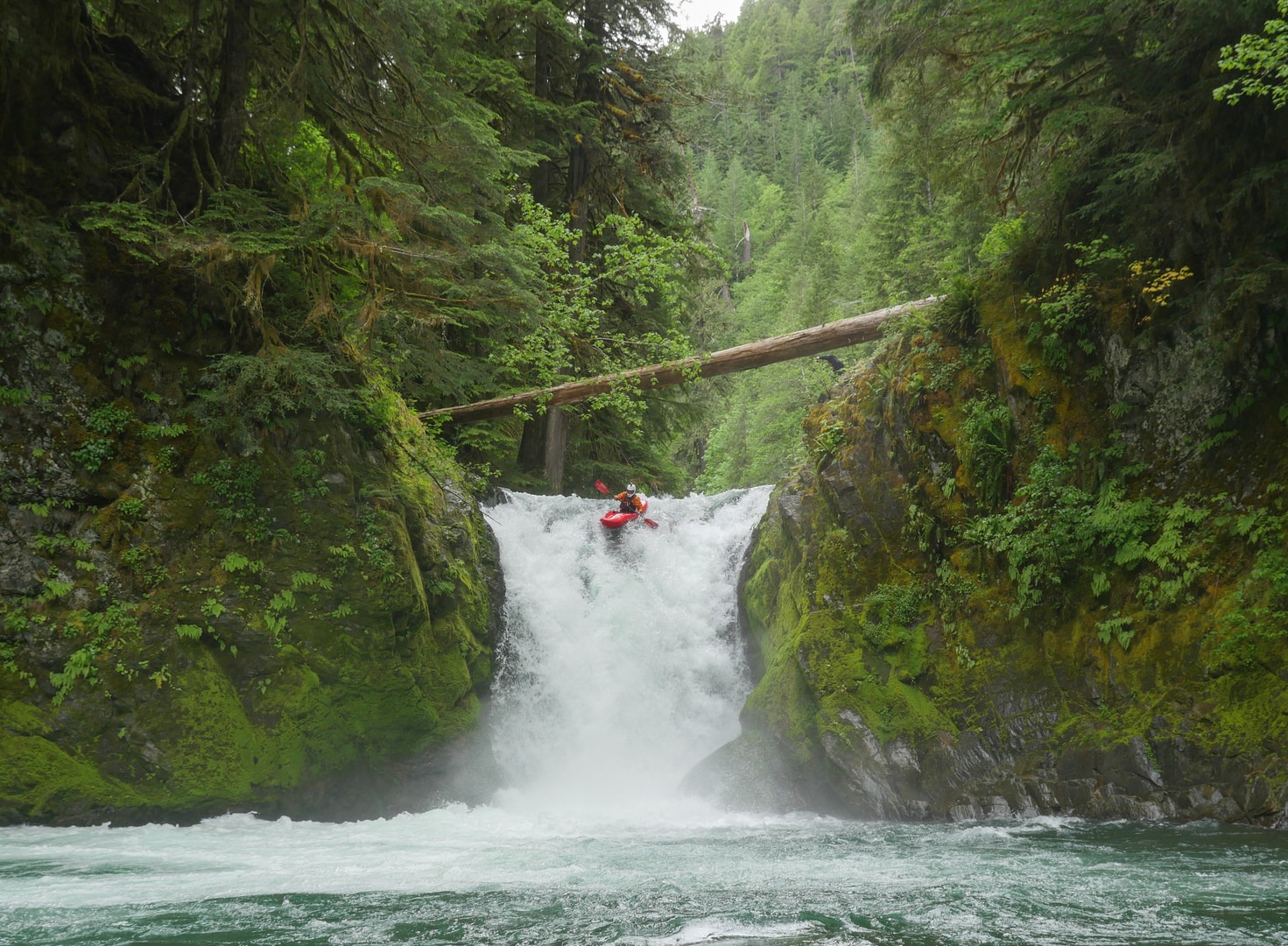You are here
Yellowjacket Creek is located in the Gifford Pinchot National Forest, Washington. The stream is situated in a beautiful canyon that flows off the east slope of Mount St. Helens.
In the past, paddlers have opted for a difficult hike-in and rappel just below the steepest gorge and 40-foot waterfall. It is easiest to put in at this location: 46.361306, -121.853974, which involves a short walk from the road to the river. At this put-in, you will run a few read-and-run rapids before reaching a bedrock section, which will mark the sliding approach to a 15- to 20-foot waterfall. Keep an eye out for eddies, as it would be easy to go too far and accidentally slide into one. The waterfall has a shallow landing and should be scouted carefully or portaged by seal launching from the shelf in the middle of the river, or by scrambling on the left bank and lowering your boat below the drop.
Next, the run has some fun Class III to Class IV drops and ledges before you reach another horizon line, marking the lead into a 15-foot sliding waterfall. There is an eddy on the left just above the drop that can be caught to get a closer look or to set up for pictures. The drop is best run on the left off a shelf, which is a fun auto-boof. Just below this is another smaller sliding ledge that can be run on the center left.
After some more read-and-run rapids, look for eddies on the left as you approach the largest drop on the run — the 40-footer. Overlooking your surroundings in the section above the drop could result in running the drop blind because of missing the eddy. Scout the drop from the left, or portage by throw-and-go into the large pool below.
The next section of river has several fun slides before reaching Veta Creek, the "guidebook section." The rapids range between straightforward ledges to steep slides to boulder gardens, making this section plenty entertaining.
The first bigger drop of this section comes quickly after a short warm-up. You can scout this drop to the right. Here, the river bends right then left through a tight boulder jumble. The line is obvious, it but should be scouted for wood each season.
Below this drop there is more fun Class III boulder gardens as you approach The Meteorite, which is a series of three small ledges just above the McCoy Creek confluence. This drop can be scouted left and run right. Next is Godzilla, another highlight of the run. This series of four ever-larger ledges can pack a punch as water levels increase. Scout to the left.
Below Godzilla, the river continues through more rapids, most of which are scoutable by boat. When the river bends right toward a house rock then left into a cliff wall, stop and scout the 7-foot sliding falls. At lower levels, you can scout from the right side of the drop and run as far right as possible in the left channel. As water levels increase, a right side line opens up.
Below the falls, the river eases to Class III. Only one drop remains, and when you see a large, light grey basalt wall rising out of the water on the right, prepare to scout this last drop from the left. The line is far right, against the canyon wall. Below the final boulder garden, the creek returns to Class III boulder gardens in small scenic canyons.
When you leave the canyons for the cobblestone gravel fans, you're a half-mile above the takeout bridge.
Check for logs blocking the creek each year because the situation constantly changes. In June 2017, the run was clear with the exception of one log in a moving pool just before the take-out bridge.
Logistics + Planning
Current Weather: Powered by Dark Sky
























Comments
Sign In and share them.